
By Kasey Cantwell - NOAA Office of Ocean Exploration and Research
September 21, 2015
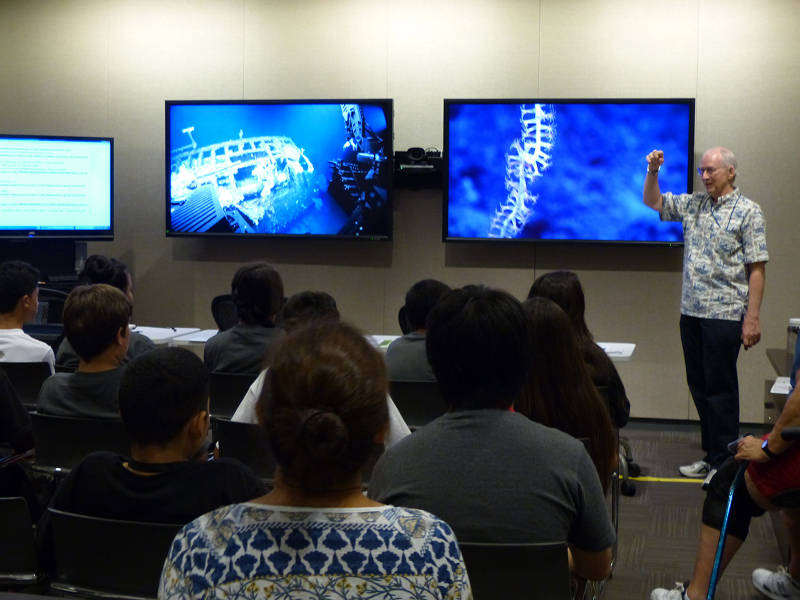
When functioning properly, telepresence can be an amazing outreach tool. Here, Bruce Mundy talks to a group of students from a local Honolulu school visiting the Inouye Regional Center about the expedition and what lies in the unexplored deep sea right in their backyard. Image courtesy of the NOAA Office of Ocean Exploration and Research, 2015 Hohonu Moana. Download larger version (jpg, 2.4 MB).
Telepresence is both a blessing and a curse. Ninety-five percent of the time it is an amazing tool that allows NOAA Ship Okeanos Explorer to tap into the intellectual capital of a science team bigger than what even the largest research vessel could accommodate. This capability allows us to conduct multidisciplinary expeditions and be truly prepared for whatever we discover during our explorations. It also allows us to harness the Internet and social media into amazing outreach tools that allow the general public to join us in the excitement of the expedition.

With the satellite connection still having issues, the “video interrupted” logo has become one of my least favorite things to see on our website. Image courtesy of the NOAA Office of Ocean Exploration and Research, 2015 Hohonu Moana. Download image (jpg, 53 KB).
Then there is the frustrating side of telepresence. The whole operation hinges on a complicated network of computers, network switches, cables, servers, and satellite dishes. While we have built-in redundancies, sometimes even the back-up plans for our back-up plans fail. Other times, we have a single point of failure that becomes troublesome—and unfortunately, this is what is currently happening with the satellite dish on the ship.
When the dish has trouble connecting with and tracking the satellite in the sky, simple things like emails become exasperating as it takes five to ten attempts to send one message and attachments become impossible to upload or download. Sending data to shore often times becomes equally challenging. Since we rely heavily on telepresence to conduct our operations, losing the connection to the shore-based team means that our science team is suddenly limited to only our two at-sea science leads.
From shore, these issues are often heartbreaking. One moment we are connected to the ship, the next we are disconnected—often in the middle of a sentence. The video comes in for a few seconds, pixelates, and then is gone. Or we get some combination of the two—we can hear what the at-sea team is saying, but can’t see what they are describing, or vice versa.
Fortunately, all of the video is being recorded, so even if we can't see the video in real time, we can go back and analyze the data later. The whole situation really makes you appreciate how much we rely on basic communication tools in our day to day lives, let alone when trying to connect a ship to dozens of scientists on shore.
Below are a few of the exciting things you may have missed during the last few dives while we were having satellite issues.
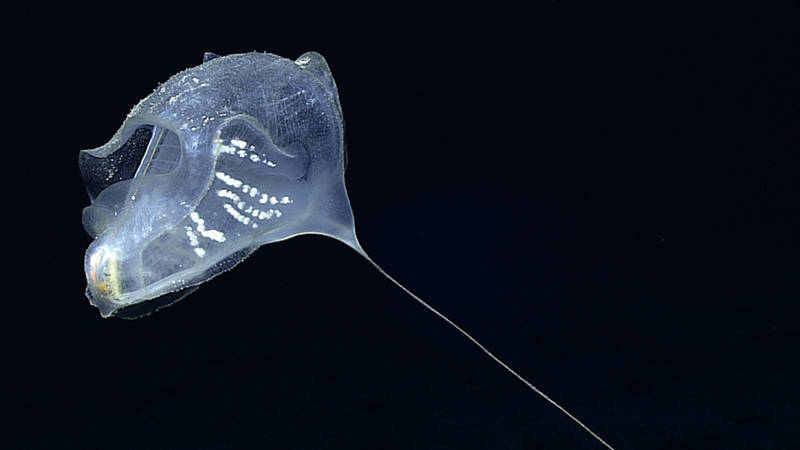
Stalked benthic tunicate from our first dive at Johnston Atoll at Karin Ridge. Image courtesy of the NOAA Office of Ocean Exploration and Research, 2015 Hohonu Moana Download larger version (jpg, 902 KB).
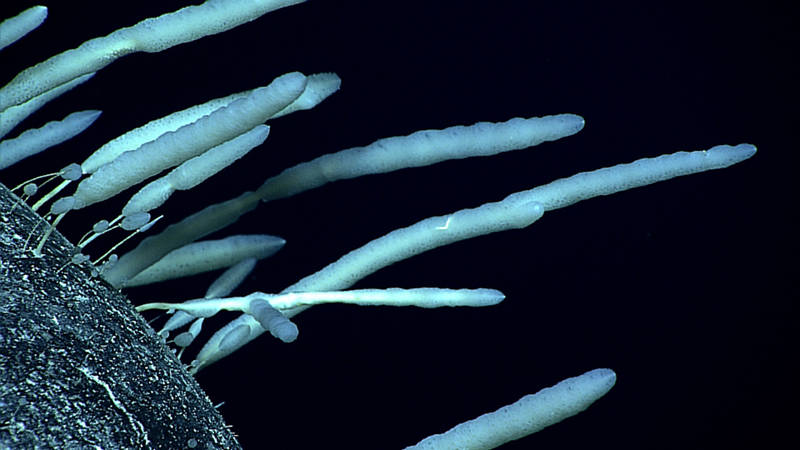
A group of stalked sponges, including some very small recent recruits, at Karin Ridge help give our science team a better idea of the life history of this organism. Image courtesy of the NOAA Office of Ocean Exploration and Research, 2015 Hohonu Moana. Download larger version (jpg, 1.0 MB).
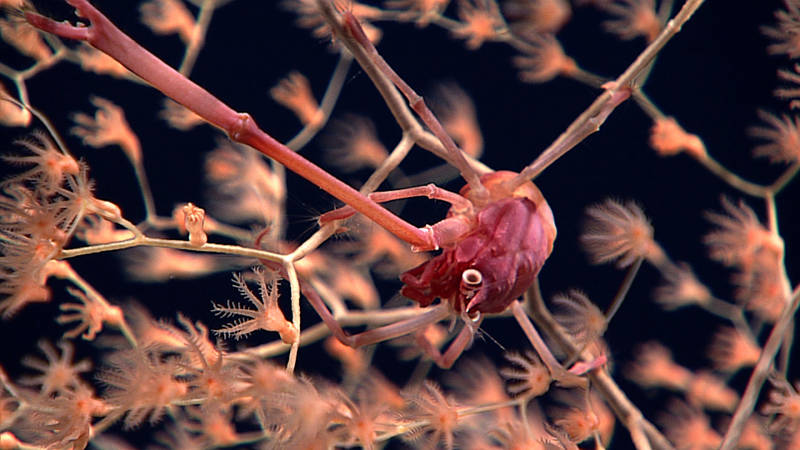
Remotely operated vehicle Deep Discoverer documented a number of squat lobsters residing in an octocorals throughout the dive at Twin Cones. Image courtesy of the NOAA Office of Ocean Exploration and Research, 2015 Hohonu Moana Download larger version (jpg, 1.2 MB).
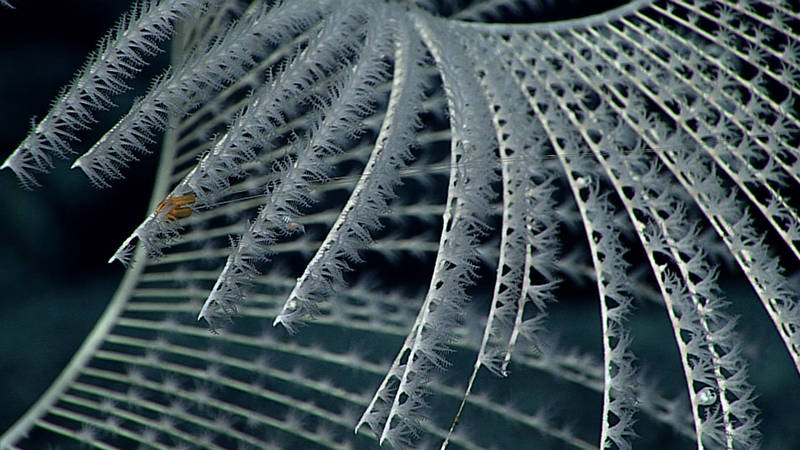
A very small benthic ctenophore rested on a Iridogorgia (coral) at Twin Cones. Image courtesy of the NOAA Office of Ocean Exploration and Research, 2015 Hohonu Moana. Download larger version (jpg, 1.4 MB).
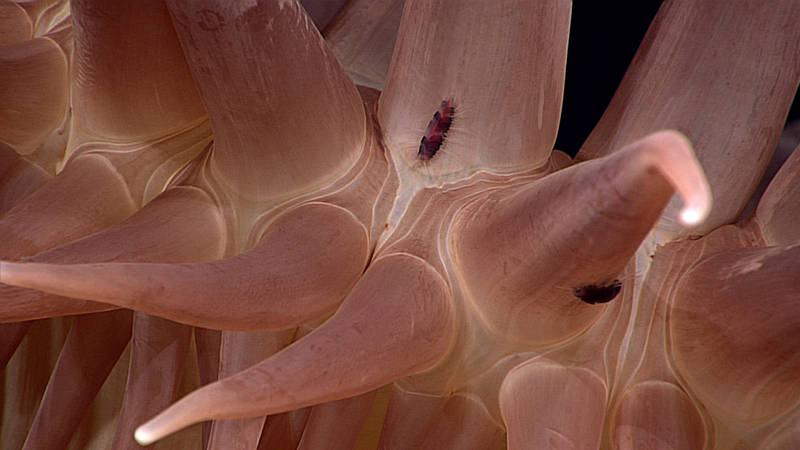
We encountered a large anemone with a number of small polychaete worms roaming over the tentacles. Image courtesy of the NOAA Office of Ocean Exploration and Research, 2015 Hohonu Moana Download larger version (jpg, 1.3 MB).
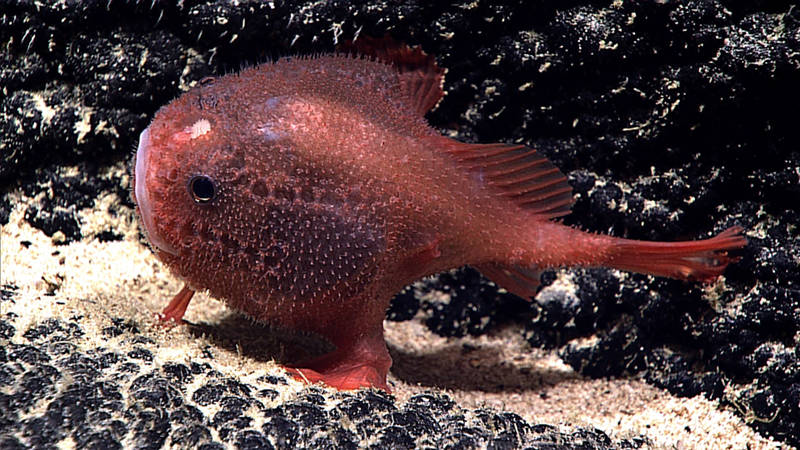
This sea toad, documented during Dive 07, was a new observation for this region. Image courtesy of the NOAA Office of Ocean Exploration and Research, 2015 Hohonu Moana. Download larger version (jpg, 1.6 MB).